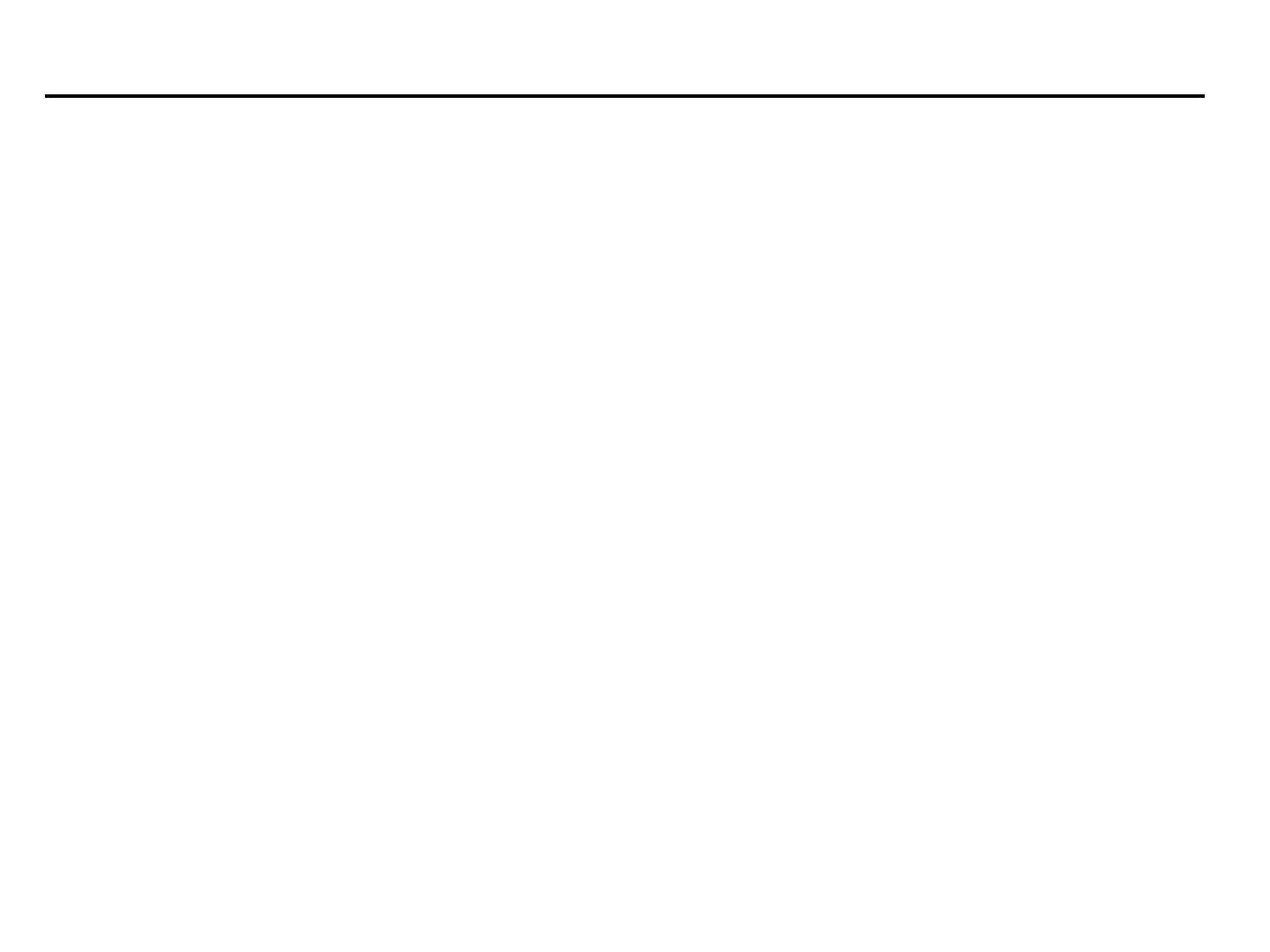The Digestive System: Tongue Muscles and Innervation
Slides from University about The Digestive System. The Pdf, a presentation, details the anatomy and function of the tongue within the digestive system, covering intrinsic and extrinsic muscles and innervation. This material is suitable for university-level Biology students.
See more57 Pages


Unlock the full PDF for free
Sign up to get full access to the document and start transforming it with AI.
Preview
THE DIGESTIVE SYSTEM Objectives
At the end of the lecture, students should be able to: Describe the individual organs of the system, including a discussion of the gross and microscopic anatomy. v Determine the function of each part of the digestive system. v Describe the path food follows in the body from beginning to end.
Functions
- Ingest food
- Break down food into nutrient molecules (digestion)
- Absorb molecules into the bloodstream
- Rid the body of indigestible remains
Food Ingestion Mechanical digestion Pharynx · Chewing (mouth) Esophagus · Churning (stomach) Propulsion · Segmentation - (small intestine) · Swallowing (oral pharynx) Chemical digestion · Peristalsis (esophagus, stomach, small intestine, large intestine) Stomach Ja Absorption -Lymph vessel Small intestine Blood vessel Large intestine Mainly H2O Feces Defecation Anus Copyright @2001 Benjamin Cummings, an imprint of Addison Wesley Longman, Inc.
Main Divisions of the Digestive System
- Alimentary Canal (Continuous, muscular tube) Mouth, Pharynx, Esophagus, Stomach, Small and Large Intestines
- Accessory Digestive Organs Teeth, Tongue, Gallbladder, Salivary Glands, Liver, and Pancreas
Tongue Parotid gland Mouth (oral cavity) Sublingual gland Salivary glands -Submandibular gland Pharynx Esophagus Stomach Pancreas (Spleen) Liver Gallbladder Transverse colon Descending colon Duodenum Small intestine Jejunum Ascending colon lleum Cecum Sigmoid colon Rectum Vermiform appendix Anal canal Anus Copyright @2001 Benjamin Cummings, an imprint of Addison Wesley Longman, Inc. Large intestine
Oral Cavity
Palare divides it fran Nasal Cavity ORAL CAVITY FUNCTIONS: the inlet for the digestive system, taste and masticate food; swallow, manipulate sounds; breathing - Roof Cpalate - Floor - Lateral walls - The posterior aperture oropharyngeal isthmus Nasal cavities Lateral wall (cheek) Roof (hard palate) Soft palate Oral cavity proper Soft palate Pharyngeal isthmus Oropharynx Oropharyngeal isthmus Oral fissure -Pharynx Oral cavity Floor (tongue and other soft tissues) Larynx Trachea Esophagus Oral vestibule Oropharyngeal isthmus A B Oral fissure
Walls of the Oral Cavity - Cheeks
Each cheek contains the buccinator muscle and a variable amount of adipose tissue - the buccal fat pad (of Bichat), particulary evident in infants. Parotid duct Skin and subcutaneous Fat Smas Masseter Branches of facial nerve Buccal fat pad Buccinator muscle Mucosa Orbicularis oris Buccinator Attachment to maxilla Modiolus Attachment to mandible Superior constrictor Pterygomandibular raphe
Walls of the Oral Cavity - Oral Fissure and Lips
Orbicularis oris muscle Vestibule Philtrum Artery and vein Superior and inferior labial arteries Vermilion borders Facial artery- Buccinator muscle Oral fissure Vermilion border of lip B Labial salivary glands La intrinsic A Orbicularis oris muscle The lips are two fleshy folds surrounding the oral orifice. The central part of the lips contains orbicularis oris muscle
Oral Cavity Subdivisions
Oral cavity green purple Subdivided into the VESTIBULE and the ORAL CAVITY PROPER Oral cavity proper Soft palate Oral vestibule Oropharyngeal isthmus B Oral fissure Superior lip (pulled upward) Superior labial frenum Gingivae Palatoglossal fold Fauces Palatopharyngeal fold Hard palate Soft palate Uvula Palatine tonsil Cheek Tongue (lifted up) Molars Lingual frenum Premolars Opening of duct of submandibular gland Canine Incisors Gingivae Inferior labial frenum Vestibule Inferior lip (pulled down)
Oral Vestibule
Space between the cheeks or lips and the teeth; When the jaws are closed, communicates with the oral cavity proper behind the 3rd molar tooth on each side (RETROMOLAR TRIANGLE); The Retromolar Triangle Inferior alveolar nerve Retromolar triangle VILUSTRANON (8 6)506-7351 Labial frenulum: is a fold of mucous membrane at the midline. Maxillary labial frenum Mandibular labial frenum Buccal frenums They provide stability of the upper and lower lips Mucogingival junction Alveolar mucosa Maxillary labial frenum Marginal gingiva Maxillary vestibule Attached gingiva Interdental gingiva Mandibular buccal frenum Mandibular vestibule
Oral Mucosa
The oral mucosa is continuous with the skin at the labial margins and with the pharyngeal mucosa at the oropharyngeal isthmus. It is divided into: Lining mucosa LINING MUCOSA: non-keratinized stratified squamous epithelium, found almost everywhere else in the oral cavity MASTICATORY MUCOSA: keratinized stratified squamous epithelium, subjected to masticatory stress (hard palate and attached gingiva) SPECIALIZED ORAL MUCOSA: specifically in the regions of the taste buds on lingual papillae on the 2/3 dorsal surface of the tongue Buccal mucosa Floor of mouth Vessel Masticatory mucosa Keratin layer Tongue mucosa Keratin layer
Oropharyngeal Isthmus - Isthmus of Fauces
Palatoglossal arch (anterior pillar of fauces) => Glossopalatinus muscle Palatopharyngeal arch (posterior pillar of fauces) => Pharyngopalatinus muscle. Between the two arches => palatine tonsil Palatine raphe Palatine glands Greater palatine artery Greater palatine nerve Musculus uvulae -Greater palatine foramen Pterygoid hamulus Palatopharyngeal arch (posterior pillar of fauces) Superior constrictor Pterygomandibular raphe Buccinator Palatoglossal arch (anterior pillar of fauces) Palatoglossus Isthmus of fauces (oropharyngeal isthmus); oropharynx Lingual nerve Palatine tonsil Dorsum of tongue, anterior part (presulcal part) Palatopharyngeus
Palate - Hard Palate Anatomy
It is formed by the palatine process of the maxilla (anterior 3/4) and horizontal plate of palatine bone (posterior 1/4); On the anterior portion are the plicae, irregular ridges in the mucous membrane Palatine process of maxilla V / Incisive fossa Incisive papilla overlying incisive fossa 1 Intermaxillary suture Palatine raphe Palatine rugae Hard palate- Interpalatine suture Greater Palatine foramina Horizontal plate Lesser Palatine bone Pyramidal process Choana Soft palate- Posterior nasal spine Hamulus of medial pterygoid plate Uvula Vomer Lateral and medial pterygoid plates FIGURE 8.34 Teeth and hard palate. Inferior view of the bones forming the hard palate.
Palate - Hard Palate Foramina
incisive foramen major & minor palatine foramina Nasopalatine nerve, incisive foramen descending palatine artery 7 Greater palatine nerve foramen Greater palatine artery Middle palatine nerve lesser palatine Posterior palatine nerve I Lesser palatine artery
Palate - Soft Palate Borders
It is the posterosuperior border of the oral cavity; it separates the oral cavity from the nasopharynx Margins: - Anteriorly: continuous with the hard palate - Posterolaterally: forms the superior portion of the palatoglossal and palatopharyngeal folds - Posteriorly: the uvula hangs in the center of the posterior free margin J Gregory Nasopharynx Hard (bony) palate Soft palate Muscle layer Salivary glands Uvula Tongue Tongue Oropharynx
Palate - Soft Palate Epithelium
Pseudostratified ciliated columnar epithelium Nasal side Muscles of soft palate Platine glands Platine glands Stratified squamous non-keratinized epithelium Oral side Uvula
Palate - Soft Palate Muscles
Muscles of Soft Palate - Musculus uvulae - Tensor veli palatini - Levator veli palatini - Palatopharyngeus - Palatoglossus Oral cavity Tensor veli palatini muscle Levator veli palatini muscle Pharynx Palatine tonsil Palatopharyngeus muscle Tongue Palatoglossus muscle Hyoid bone All muscles of the palate are innervated by the vagus nerve [X], except for the tensor veli palatini, which is innervated by the mandibular nerve [V3] B
Palate - Soft Palate Functions
The soft palate can: " swing up (elevate) to close the pharyngeal isthmus, and seal off the nasopharynx from the oropharynx (during swallowing). · swing down (depress) to close the oropharyngeal isthmus and seal off the oral cavity from the oropharynx. Soft palate in neutral position Oropharyngeal isthmus closed Opening between nasal and oral parts of pharynx closed by soft palate Oropharyngeal isthmus open Laryngeal inlet and laryngeal cavity open Back of tongue elevated, palate depressed Larynx and hyoid pulled up and forward, resulting in opening of the esophagus Epiglottis closed over laryngeal inlet Neutral position Oropharyngeal isthmus closed Nasopharynx and oropharynx opening closed by soft palate
Floor of the Mouth Muscles
- a muscular diaphragm which is composed of the paired mylohyoid muscles; It elevates the floor of the mouth in the first stage of deglutition - two cord-like geniohyoid muscles above the diaphragm - the tongue, which is superior to the geniohyoid muscles. Superior mental spines Geniohyoid Inferior mental spines Mylohyoid Geniohyoid Mylohyoid
Floor of the Mouth Views
Inferior view Mylohyoid m. Mylohyoid raphe Digastric m., anterior belly Superior view Geniohyoid m. Mylohyoid m.
Tongue Anatomy
-It is a highly muscular organ of deglutition, taste and speech. Root and body part divided by a V-shaped sulcus terminalis; - Root part_(pharyngeal - postsulcal - part): 1/3, attached to the hyoid bone and mandible; - Body part (oral - presulcal - part): 2/3 Foramen cecum of the tongue Epiglottis Median glossoepiglottic fold Lateral glossoepiglottic fold Vallecula Palatopharyngeal arch and muscle Palatine tonsil (cut) Root Lingual tonsil (lingual follicles) Palatoglossal arch and muscle (cut) Foramen cecum Sulcus terminalis Vallate papillae Foliate papillae Filiform papillae Body Fungiform papilla Median sulcus Dorsum of tongue Oral part (anterior two-thirds) Foramen cecum and terminal sulcus Pharyngeal part (posterior one-third) Root of tongue Inferior surface Hyoid bone Mylohyoid muscle Mandible A Geniohyoid muscle Apex
Tongue - Oral Part
Located in the floor of the oral cavity Dorsal surface: has a longitudinal median sulcus and is covered by papillae; Ventral surface: smooth; it is connected to the oral floor by the lingual frenulum (It tends to limit the movement of the tongue) Epiglottis Median glossoepiglottic fold Lateral glossoepiglottic fold Vallecula Palatopharyngeal arch and muscle Palatine tonsil (cut) Lingual tonsil (lingual follicles) Root Palatoglossal arch and muscle (cut) Foramen cecum Sulcus terminalis Vallate papillae Foliate papillae Filiform papillae Body Fungiform papilla Median sulcus Dorsum of tongue Fimbriated fold Anterior lingual gland Frenulum of tongue Deep lingual artery and veir Sublingual fold Sublingual gland Sublingual caruncle (greater sublingual duct) Lesser sublingual ducts Apex